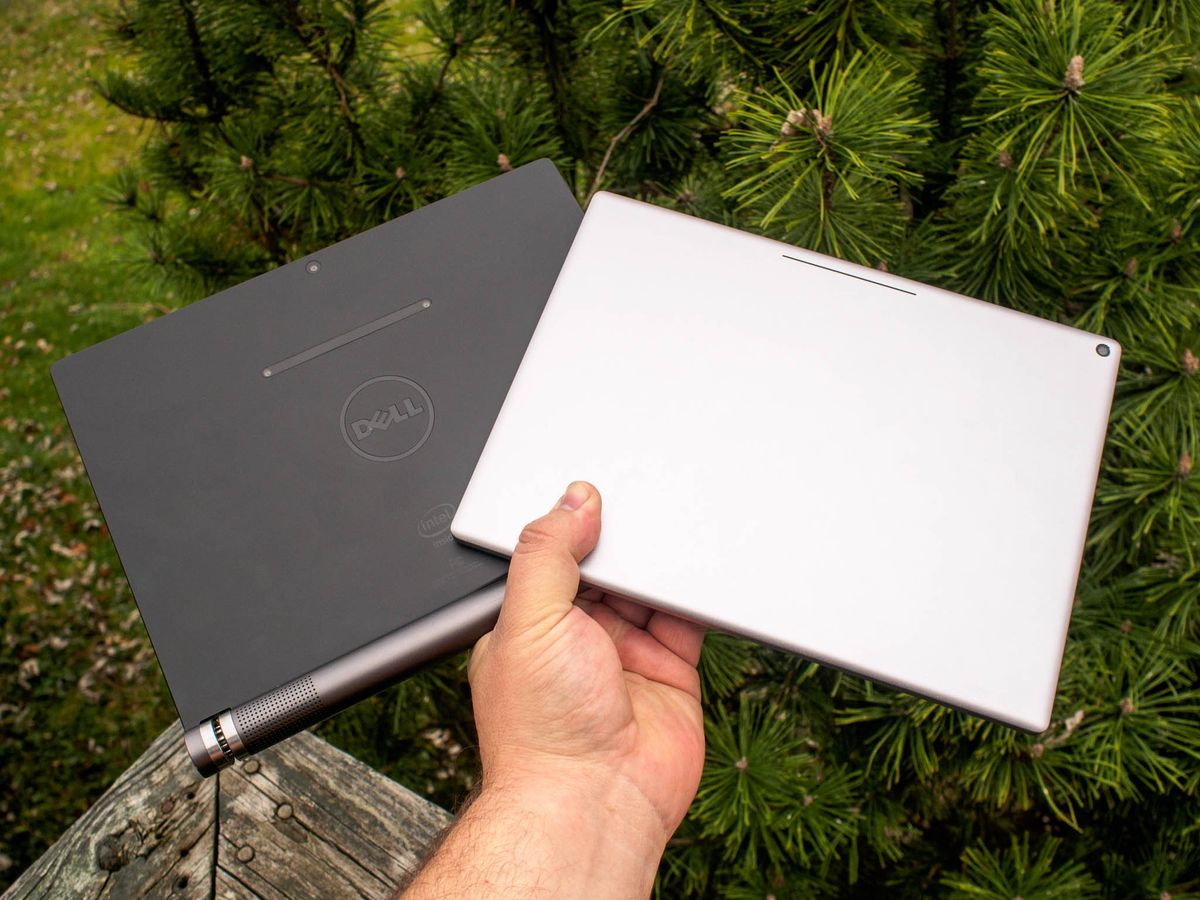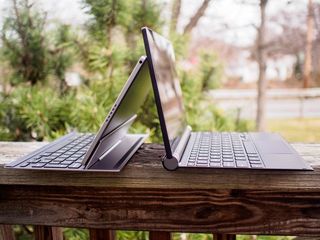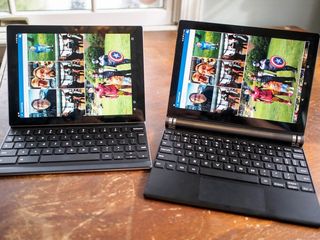Google Pixel C vs Dell Venue 10 7000 Series: an Android tablet keyboard showdown

There's a lot of excitement surrounding the shiny new Pixel C from Google, and with good reason. It's a spec powerhouse, it's running the latest and greatest version of Android, and it is so damn pretty. A big selling point for this tablet is its keyboard, which connects to the tablet with a series of powerful magnets and even receives power from the tablet when docked in a closed position. All told, the Pixel C has no shortage of clever but right this moment the software still stumbles to deliver a complete thought.
If that sounds familiar, it's because we said almost the exact same thing about another clever Android tablet/keyboard combo that was released earlier this year. Dell's Venue 10 7000 Series and Google's Pixel C have a lot in common, and choosing between the two really comes down to what functions you're most willing to sacrifice in order to get an Android-powered almost-laptop.

The Pixel C and Venue 10 7000 have a ton in common. They're both heavy, metal, landscape-designed 10-inch tablets rocking incredible displays with a focus on "productivity" through the addition of a optional keyboard. Where Google opted to place a battery in their Bluetooth keyboard and use a magnetic hinge to connect it to the tablet, Dell went with an asymmetrical design that put the battery along the long edge of Venue 10, but this design allowed room for an incredibly clever magnetic barrel hinge that powers a unique Bluetooth keyboard.
Their approaches are different, but the end results really aren't. You get an Android tablet that is a bit on the heavy side when using it day to day that clearly feels like it was built to spend most of its time pretending to be a laptop.
| Category | Pixel C | Dell Venue 10 7000 |
|---|---|---|
| Row 0 - Cell 0 | Row 0 - Cell 1 | Row 0 - Cell 2 |
| Dimensions | 242 x 179 x 7 mm | 243 x 195 x 6.2 mm |
| Weight | 517 g | 597 g |
| OS | Android 6.0.1 | Android 5.1 |
| Display | 10.2-inch 2560 x 1800 LTPS LCD @ 308ppi | 10.5-inch 2560x1600 OLED @ 288ppi |
| Processor | NVIDIA Tegra X1 | Quad Core Intel Atom Z3580 @ 2.3Ghz |
| RAM | 3GB | 2GB |
| Storage | 32GB or 64GB | 16GB or 32GB |
| MicroSD | No | up to 512GB |
| Camera (rear) | 8MP primary | 8MP primary w/720p Intel RealSense secondary |
| Camera (front) | 2MP | 2MP |
| Wireless | Wi-Fi only, 2x2 MIMO 802.11 a/b/g/n/ac | Wi-Fi only, dual band 802.11 a/b/g/n/ac |
| Bluetooth | v4.1 | v4.0 |
| Battery | 9243 mAh* | 9000 mAh |
- For ease of comparison, battery size converted from watt-hours using 3.7V for calculation
Using these two tablets side by side, there's very little difference in performance. The greater pixel density on the Pixel C means text is slightly sharper on some websites, but in most cases everything looks the same. There's no real difference in loading apps between the Tegra X1 and the Intel Atom Z3580, aside of course from games specifically optimized for the Tegra processor. The biggest difference between the two in performance is battery life. You'll find the Pixel C routinely lasts an hour and a half longer than the Venue 10, and the added ability to charge rapidly means (and via the newer USB-C) is an added bonus.
The physical differences between the two tablets mean the Pixel C is easier to hold landscape, due to the even distribution of weight and overall decrease in size. Those same details play to Dell's strengths when holding the tablet portrait, as the off-center weight from the battery bulge makes the tablet significantly easier to hold with one hand than the Pixel C. Dell's design also allows for better audio, as the speakers are always pointed at you instead of out to the sides. In theory, Dell's collaboration with Intel on the rear camera means there's some additional functionality that the Pixel C will never have, but in practice you're unlikely to ever really use either rear camera because they aren't very good. The front-facing cameras, on the other hand, are decent for video chat on just about everything.







Where Dell's tablet really outshines the Pixel C is in actually using the keyboard. Google's decision to go with a magnetic hinge about a third of the way in from the back cut into the available space for the keys, while Dell put their hinge at the back edge of the keyboard, opening space for not just more keys but a functional trackpad as well. This means no reaching up to tap the home button, no tapping a text field before typing, and there's even a nice backlight to Dell's keyboard. The travel on the keys isn't quite as nice as on Google's keyboard, but it's a better overall keyboard in every other way.
Be an expert in 5 minutes
Get the latest news from Android Central, your trusted companion in the world of Android
What Dell gains in hardware functionality, they currently lose in software functionality. Currently the tablet is stuck on Android 5.1 and has had very few security updates, where Google's Pixel C is running the latest version of Android and will be updated on a monthly basis. This doesn't have a huge bearing on day to day usage between the two tablets, especially when both of them suffer from the same failures when apps don't deliver a tablet interface or force the screen into a portrait view when docked into a landscape keyboard, but it's clear the Pixel C is always going to have more current software than the Dell Venue 10 7000.

Like we said in the beginning, choosing between these two tablets is essentially choosing what you want to sacrifice. The Pixel C is easily the better tablet of the two, with its longer battery life and smaller form factor that plays nice in every situation. But if you're really buying one of these to attach a keyboard to it most of the time Dell has built a much more capable machine at a slightly more reasonable price. For $579 you get a 32GB Venue 10 7000 with its superior keyboard, where the same Pixel C configuration will run you $648. All you're really doing at this point is deciding which features you value, because unfortunately there is no machine that offers the best of both worlds right now.